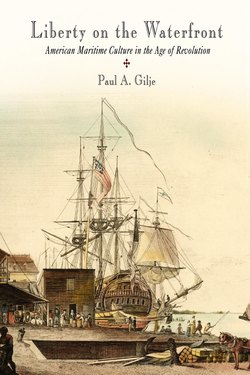Liberty on the Waterfront

Реклама. ООО «ЛитРес», ИНН: 7719571260.
Оглавление
Paul A. Gilje. Liberty on the Waterfront
Отрывок из книги
EARLY AMERICAN STUDIES
Daniel K. Richter and Kathleen M. Brown, Series Editors
.....
Douglass, disguised in sailor's garb, was able to travel undetected to the North and his freedom because so many black men signed on as seamen in the merchant marine. The extent and character of the African American component of crews, however, varied over time. During the colonial period it was not unusual to find slaves serving aboard vessels. In some cases an entire crew might be made up of men in bondage. Free blacks also worked aboard ships. After the American Revolution, which created a large pool of free African Americans in both the North and the South, blacks became a significant element of almost every crew. At least one-fourth of Philadelphia's young black males shipped as sailors in the early nineteenth century.122 In crew lists for several cities for the same period, the percentage of berths held by blacks usually hovered around 15 percent, while in some cities, like Providence, the total reached 30 percent. By the 1830s and 1840s, however, the number of African American seamen began to decline as several southern states passed laws discriminating against black seamen, and as racial prejudice intensified in both the North and the South. By the 1840s and 1850s many of the blacks still in the merchant marine were driven from the forecastle and worked as ship's cooks.123
Even among the American-born white seamen there were many differences in background and birthplace. The image of the chiseled New Englander as the embodiment of the American tar does not hold. True enough, many sailors hailed from New England, and in some areas of maritime industry, like the banks fishery that sailed from small ports like Marblehead and Gloucester, Massachusetts, many of the half dozen men crammed into the small schooners came from the same towns and knew each other all too well.124 On long whaling voyages too, the crew might be taken from all over New England and include Native Americans as well as young farm boys eager to earn a stake to establish themselves on shore.125 But the merchant sailing vessels, especially those that sailed from larger ports, contained men from up and down the seaboard. In the colonial New York Admiralty courts, only about half of the American-born men identified came from New York.126 This proportion may have declined in large ports after the Revolutionary War. Less than 10 percent of the mariners in Philadelphia crews in 1803 were born in that city.127 In smaller ports like Salem and Providence, the majority of sailors were locals.128
.....